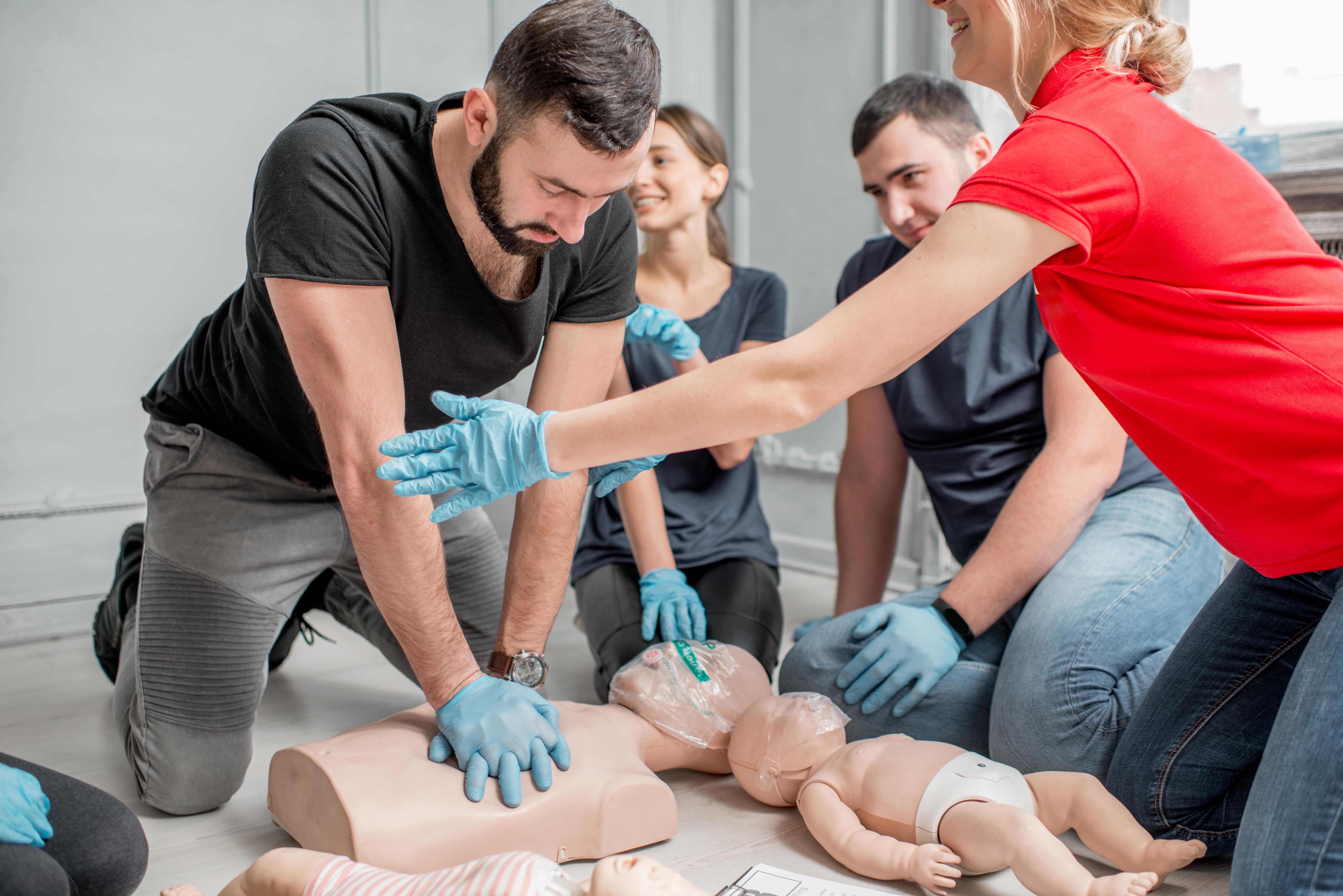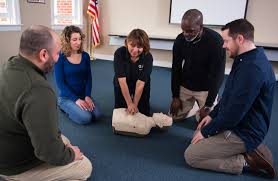Introduction
In today's globe, emergencies can strike anytime, and being prepared is essential. Among the crucial abilities that can conserve lives is cardiopulmonary resuscitation (CPR). Teenagers stand for an essential populace that can be educated to respond properly in emergencies. By furnishing them with CPR training, we not only equip them with life-saving skills however also promote a culture of preparedness and responsibility. This write-up explores the significance of mouth-to-mouth resuscitation training for teens, what to anticipate in first aid courses, and exactly how these abilities contribute to their individual development and neighborhood safety.
Understanding mouth-to-mouth resuscitation Educating for Teenagers: Preparing the Future Generation for Emergencies
What is CPR?
Cardiopulmonary resuscitation (CPR) is a lifesaving method used during emergencies when someone's heart beat or breathing has actually stopped. It contains chest compressions and rescue breaths that help maintain blood flow to crucial organs till professional clinical help shows up. Comprehending the fundamentals of mouth-to-mouth resuscitation is critical for teenagers that may locate themselves in emergency situations.

Why Do Teenagers Required Mouth-to-mouth Resuscitation Training?
Teens are commonly at celebrations, sporting activities occasions, or even home events where emergencies may happen. By discovering CPR, they end up being proactive participants of their first aid courses Belmont neighborhood that can act decisively throughout dilemmas. The capability to execute CPR with confidence can transform a potentially terrible circumstance right into one where lives are saved.
Benefits of Emergency treatment Courses for Teens
First help courses do greater than simply teach individuals how to supply immediate treatment; they infuse confidence and reinforce analytical abilities. For teens, this experience can build character and motivate management top qualities.
- Empowerment: Knowledge of emergency treatment and mouth-to-mouth resuscitation equips young people. Confidence Structure: Effectively completing a training course offers teenagers with a feeling of achievement. Community Solution: Educated teens can offer in different settings such as institutions or sporting activities teams.
The Structure of CPR Courses for Teens
Course Duration and Format
Most emergency treatment training courses are created to fit within a couple of hours to a couple of days, depending on the deepness of training supplied. Usually, a standard emergency treatment course will certainly cover:
- Theory: The principles behind first aid techniques. Practical Skills: Hands-on practice with mannequins or through simulations.
Key Components Covered in Emergency Treatment Courses
Understanding Emergency Situations- Recognizing when to call for help Assessing the scene for safety
- Performing high-quality breast compressions Providing rescue breaths correctly
- Learning exactly how to operate an AED Importance of early defibrillation
- Techniques for adults, youngsters, and infants Recognizing indicators of airway obstruction
- Cuts and scrapes Sprains and fractures
The Importance of Qualification in Emergency Treatment Training
Obtaining Your First Aid Certificate
Completing a first aid course usually culminates in receiving a qualification that validates your abilities. This certificate offers numerous objectives:
- It demonstrates skills in emergency situation response. Many organizations call for certification for involvement in particular events.
Keeping Qualifications Current
Just like any life ability, it is necessary to keep your knowledge up-to-date. A lot of companies suggest renewing qualifications every 2 years.
How Teens Can Obtain Entailed with Emergency Treatment Training
Finding Local Emergency treatment Courses
Teenagers curious about getting their emergency treatment certification should look into neighborhood community centers, institutions, or health and wellness organizations that offer accredited programs.
Helpful Resources:
- American Red Cross St John Ambulance Local healthcare facilities or health departments
Online vs In-Person Training Options
With developments in innovation, on-line components have actually come to be preferred yet might do not have hands-on method necessary for absolutely understanding strategies. A combined method-- combining on-line concept with useful sessions-- might be most beneficial.
Creating Awareness Amongst Peers concerning Mouth-to-mouth Resuscitation Training for Teens: Preparing the Future Generation for Emergencies
Peer Education and learning Initiatives
Encouraging teens to share what they've found out with their buddies can intensify the effect of training programs:
- Forming study groups focused on emergency preparedness. Hosting workshops at colleges or area centers.
Using Social Media as a Platform
Teens today are heavily engaged on social networks systems; making use of these networks can assist spread out understanding regarding the value of emergency treatment training amongst peers.
Real-Life Stories That Highlight the Value of CPR Training for Teens
Case Study 1: Saving a Life at College Sports Event
A teenager learnt mouth-to-mouth resuscitation was able to save their friend's life during a soccer suit when he fell down on the area because of heart CPR certification Sydney Olympic Park attack. Their quick thinking enabled them to carry out proper upper body compressions up until emergency situation solutions arrived.
Case Research 2: Family Emergency at Home
Another example involved brother or sisters that had taken a first aid course together. When their more youthful sibling mistakenly choked on food during dinner, they promptly recognized what steps to take since they remembered their training-- leading Caboolture CPR nearby them efficiently via the emergency.
Frequently Asked Inquiries (FAQs) About Teen CPR Training
1. What age should teens start taking mouth-to-mouth resuscitation courses?
A lot of organizations suggest starting as early as 12 years old; nevertheless, more youthful kids can also learn basic principles with appropriate programs customized to their age group.
2. For how long does it require to complete an emergency treatment course?
Training courses typically range from 4 hours up to 16 hours relying on web content depth-- the standard being around 8 hours.
3. Are there any kind of prerequisites prior to enrolling?

4. Will I obtain qualification after finishing my course?
Yes! Upon successful completion and passing any kind of required evaluations you'll obtain a main emergency treatment certification valid for 2 years.
5. Can I take these programs online?
Several institutions supply hybrid layouts integrating on-line concept with needed useful sessions kept in person-- this is recommended by industry standards.
6. Is it necessary to renew my qualification periodically?
Yes! Normal recertification guarantees your abilities stay competent and updated according to present guidelines.
Conclusion
In conclusion, outfitting young adults with expertise concerning cardiopulmonary resuscitation (CPR) through specialized training programs is important not just for their development but also improves area safety and security in general. With efficient training sources available-- from regional courses using detailed direction on both fundamental first aid strategies in addition to advanced life support approaches-- it's less complicated than ever for young individuals excited about making an impactful difference during emergencies!
As we progress into an unpredictable globe filled with obstacles requiring quick activity-- let us spend our initiatives in the direction of informing this future generation so they're prepared not just academically however additionally almost outfitted when faced versus real-life circumstances demanding immediate actions like those calling for timely interventions such as carrying out reliable cardiopulmonary resuscitation (MOUTH-TO-MOUTH RESUSCITATION).
